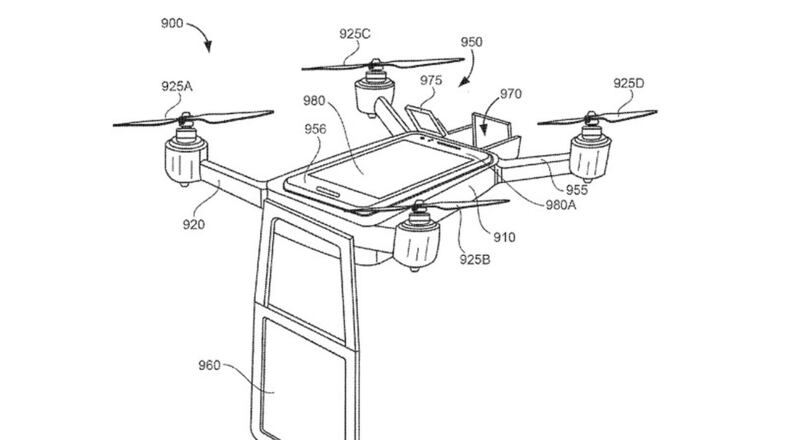Drones may be buzzing overhead in office hallways and stairwells if Google goes ahead with technology it’s seeking to patent for “unmanned vehicles for collaboration.”
The corporate world needs office drones to help conduct virtual meetings that allow those not actually present to appear by video feed, according to the patent application made public Feb. 2 by the U.S. Patent and Trademark Office.
The problem, according to Google, is that equipment for such “telepresence” meetings can be expensive and unmovable, and can limit additional uses of the room it occupies.
“A mobile component may provide an additional level of flexibility to a telepresence system, allowing the telepresence system to be moved into and around a plurality of different designated locations,” said the application, filed in August.
Floor-going robots are an inadequate solution, Google said.
“The size and energy consumption levels of this type of telepresence robot may hinder its ability to effectively navigate complicated spaces with limited open floor space for the robot to traverse,” the application said. “Additionally, this type of telepresence robot cannot traverse stairs, and would require on-site human intervention to access a work space on a different floor using an elevator.”
Of course, stairs aren’t an issue for robots that fly. Enter the “remotely navigated airborne form of conveyance,” which could take the form of a quadcopter drone, Google said.
“Implementation of a mobile telepresence system on a relatively compact and operationally efficient airborne platform such as a quadcopter may provide significant improvements in, for example, speed, maneuverability, energy consumption and the like, facilitating access to spaces which may be otherwise difficult to access by a larger and less maneuverable platform,” according to the application.
The drone could carry audio-visual equipment including a rotating screen, and also be equipped with a system for projecting imagery onto walls or wall-mounted screens, Google said.
Office drones could facilitate the benefits achieved by telepresence conferencing, such as reduced travel expenses and environmental impacts, plus “improved coordination and productivity,” the application said.
They could also be used in education and health care, according to Google.
The application appears to envisage a drone that allows for the virtual telepresence of one person, which would impose a requirement for multiple office drones for meetings in which more than one participant was to appear remotely.
Also, the flying robots would have to be less noisy than those typically used outside. The application does not appear to contemplate that issue, but efforts are underway on a variety of fronts to build quieter drones.
About the Author
Keep Reading
The Latest
Featured



